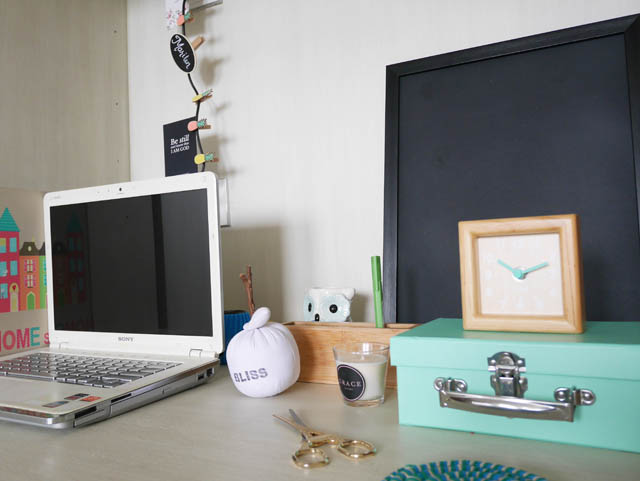
Today, it’s no longer unusual for businesses to run some, if not all, of their operations out of the homes
of their employees. Remote work has gone from being a privilege enjoyed by an exceptional few to
becoming the expected work mode for entire professions in many industries. The Philippines, with its
large number of knowledge workers, has been significantly affected by the trend, with more Filipinos
now working from home than ever before.
Working from home has several advantages for both businesses and employees. However, for
individuals who are not especially self-driven or have a chaotic home life, creating a productive and
efficient workspace at home can be a challenge. If you’re one of those struggling to design a home office
that suits your needs, don’t fret. In this guide, we’ll look at seven tried-and-tested tips that can help you
create a truly productive workspace in your home.
1) Create a Dedicated Workspace
The most significant hurdle many Filipinos face when working from home is balancing their home and
work life. Many Filipinos live in large households with multiple family members, some of whom don’t
understand the concept of working from home.
Given this, it’s essential to create a space in your home that is completely focused on work. If possible,
this space should be well delineated, if not completely separate from the rest of your home. Ideally, you
should be able to close the door to minimize distractions, particularly during virtual meetings. Your
dedicated workspace area should also be well-lit and well-ventilated so that it’s comfortable to work in.
2) Consider Getting a Sofa Bed
Unfortunately, not everyone has a home large enough to accommodate a dedicated work area,
particularly if they have to share it with family members or roommates. Many apartments, particularly
those built before the pandemic, are also too small to comfortably accommodate a workspace without
sacrificing other functions of the home.
In these cases, it may be wise to consider getting a sofa bed that gives you the extra room you need to
accommodate a serious workspace. You can simply fold up the sofa bed when it’s time to work or if you
have guests over and then turn it into a bed at the end of the day. Fortunately, these hybrid beddings
are so popular that you’ll usually find a sofa bed for sale in most brick-and-mortar furniture stores and
online marketplaces.
3) Invest in a Good Work Chair
Perhaps unsurprisingly, there is no end to the debate concerning what a “good chair” actually is. You’ll
find plenty of people advocating for expensive gaming chairs and others who push for more exotic
seating solutions like medicine balls. Others may even choose to do away with chairs completely, opting
for a standing desk instead.
The fact is, however, you will need some sort of work chair, at least some of the time. The quality of that
chair can determine how comfortable and healthy you are at the end of a long day. In most cases, you
should look into chairs that not only offer good back support but also provide you with other features
that help your productivity. When possible, try to find a reasonably supportive chair that is adjustable to
your height. If you don’t have air conditioning, avoid choosing a chair that might get too warm,
particularly during the summer.
4) Personalize Your Space
As with many other seemingly innocuous things, people seem torn about just how personalized your
workspace should be. Some advocate for workspaces to be austere and only personalized in terms of
ergonomics while others will fill every available bit of desk space with knickknacks. Regardless of this
debate, you should have a workspace that, to you, feels inviting to work in. If it makes you work better,
feel free to hang up photos or artwork that inspire you or to leave your space as spartan as you like it to
be.

5) Invest in Organizers
Organized workspaces minimize distractions, allowing you to focus on whatever task you have at hand.
In fact, the ability to create a truly organized and productive workspace is why a lot of top performers
prefer to work from home.
Fortunately, the boom in remote work has resulted in a variety of organizers and storage solutions
becoming more widely available in the mass market.
Consider getting a good number of these to store and organize various work essentials and nice-to-
haves. You can also add shelves around your workstation to display valued tchotchkes and hold things
you need immediate access to.
6) Add Some Easy-to-Maintain Greenery
Placing a few plants around your workspace (perhaps on the shelves that we suggested you put up) can
help reduce stress and help with your productivity. Unless you’re willing to go on
full plantito or plantita mode, snake plants, succulents, and other low-maintenance plant species are
usually the best choices for workspace greenery.
7) Use Natural Light, When Possible
This doesn’t apply as much to people who work the graveyard shift. However, for everyone else, it’s
beneficial to have as much natural light in your workspace as you can manage. Natural light not only
keeps you alert, but it’s also great for your mood, which should help make your home office all the more
pleasant to work in. If you have concerns about nosy neighbors peeping into your home, you can cover
up your windows with thin curtains or one-way tints to let light in while preserving your privacy.
Designing a home office that suits your needs doesn’t have to be difficult, and doesn’t have to be
particularly expensive either. So long as you follow these tips and understand what things make you
productive, you can create a workspace that’s comfortable, efficient, and very much your own.



Leave a Reply